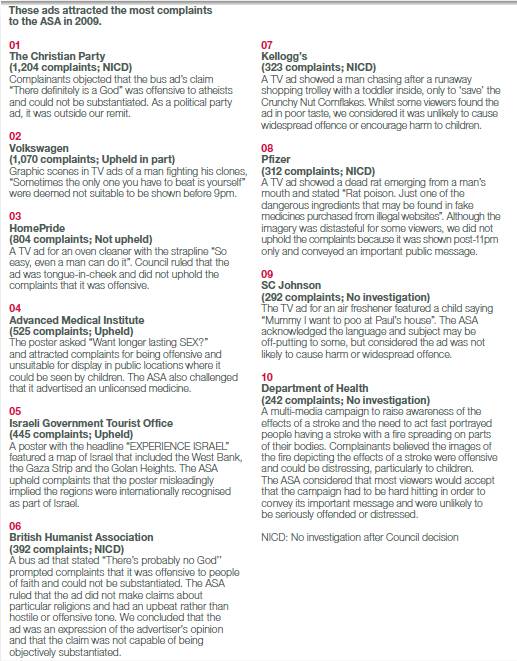Ethics of marketing
Ethical behaviour by businesses was a major focus for change in the 1990s, with increasing concern about the impact of business behaviour on the environment and a growing recognition about the rights of stakeholder groups. The role of marketing today must be seen in terms of connecting with stakeholders not only in terms of value, but in terms of values. Market value is measured not just in terms of sales but in terms of intangible assets and corporate reputation; hence the need to focus on ethical issues more than ever before.
It must be recognised, however, that the concept of ethical behaviour is both subjective and cultural. The norms and values of individuals differ, often as represented by political parties. Types of marketing acceptable in one country may break the cultural, social or religious norms of another. All we can say as business students is that the law makes some activities illegal. There are many other activities in that 'grey area', where some of the population regard them as unethical and others do not. We would place issues of drugs (alcohol and smoking) and pornography in this category. However, it is also true to say that the building of roads or the broadcasting of 'violent' cartoons are considered unethical by many, even if these groups may not want these activities to be made illegal.
In terms of the marketing function, firms need to consider the following key ethical issues:
- To what extent should firms create demand for products and services, rather than just satisfying established needs and wants? Linked to this is the marketing of products and services to children or other vulnerable groups.
- To what extent should marketing create unrealistic aspirations and focus on individual concerns and fears through advertising? Should, for instance, private health care companies raise fears about possible life threatening illness to sell their services?
- To what extent should firms market products and services that are dangerous, immoral or a risk to health, even though the sale of the products themselves are legal. Cigarette marketing has been a particular focus with, advertising being banned in many countries. Other issues relate to the legalisation of drugs such as cannabis, and to the sales of replica firearms.
Advertising has often been regarded as the 'secret persuader'; encouraging consumers to purchase products they do not need. This approach perhaps underplays the intelligence of the consumer and ignores the fact that there is now enormous choice in virtually all markets. However, which one of us can claim we have never been influenced by a marketing message to purchase one product in preference to another or, even worse, to buy an item we do not need and regret buying almost as soon as we get home!
It could be argued that consumers are not easily manipulated, and that rather than create demand, firms are merely anticipating demand in line with the definition by the Institute of Marketing. The fact that sales of the marketed product, increase in response to advertising, merely supports their recognition of a need by the firm.
There is much debate about adverts that promote unhealthy habits such as smoking and drinking. Most committed smokers recognise the dangers of their habit even if they choose to ignore the warnings. However, there are ethical issues around the marketing of national lotteries that can build gambling addictions, or the offers of financial services which make the creation of unsustainable debt a problem? The debate here is less clear-cut.
It is often easier to be ethical in times of boom rather than in times of recession. When firms are performing well, terms and conditions for employees may improve and the firm will be able to deal in a responsible manner with the community and with their suppliers, whilst providing a reliable and good value product for customers. What happens when competitive pressures increase and profits fall? Should the firm immediately look for cost reductions through downsizing or seek deeper discounts from their supplier when they know this will cause individual distress and commercial failures?

In most developed countries there are agencies which examine the ethics of firms, the nature of their products and the promotion tactics employed.
For examples claims featured in marketing materials have to be 'fair and accurate'. In 2009, the US Food & Drug Administration (FDA) investigated Cheerios manufacturer General Mills' claim that the cereal could reduce bad cholesterol by an average of 4% in six weeks. In another example, Yakult and Actimel both withdrew health claims about their drinks before the European Food Safety Authority (EFSA) could start investigations into their scientific authenticity.
 In recent years, 'Photoshop' or the airbrushing of images has grown in importance and use in the production of marketing materials. The techniques are intended to enhance the product or service or to change the nature of the people or models used. This has led to complaints about misrepresentation. The typical 'before' and 'after' shots, such as those used by dietary products, are often airbrushed. One example was an advertisement featuring 'Twiggy' using an eye shadow product which was deemed to be misleading by The Advertising Standards Authority (ASA), because the image of Twiggy had been digitally enhanced and therefore gave a misleading impression of what the product could achieve.
In recent years, 'Photoshop' or the airbrushing of images has grown in importance and use in the production of marketing materials. The techniques are intended to enhance the product or service or to change the nature of the people or models used. This has led to complaints about misrepresentation. The typical 'before' and 'after' shots, such as those used by dietary products, are often airbrushed. One example was an advertisement featuring 'Twiggy' using an eye shadow product which was deemed to be misleading by The Advertising Standards Authority (ASA), because the image of Twiggy had been digitally enhanced and therefore gave a misleading impression of what the product could achieve.
Photoshop is not without its problems though and there are several sites which concentrate on Photoshop disasters. One such site can be found here.
It has been recognised that an ethical stance can provide competitive advantage in the market place. Many firms now include an ethical approach in their Mission Statement or corporate aims and objectives. Some firms produce a separate document outlining their corporate and social responsibilities. Firms like S.C. Johnson in the United States and Ikea in Sweden base their activities within an ethical framework, and are very profitable.
The question is whether consumers believe a firm is truly ethical and buy more of their products as a consequence, or whether they regard the ethical message as a cynical ploy to differentiate their business. For an individual firm this perception is important. However, in the larger picture, a more responsible attitude across an entire industry, cynical or not, should benefit all of us in the long run.

Activity
You may wish to visit the following company websites sites to read about their ethical stances and their socially responsible actions and behaviour.
After visiting these sites, ask yourself whether you trust these firms more having read about their beliefs and values. Would you be more willing to purchase products from them as a result?

In most countries there will be an authority whose responsibility it is to monitor adverts and check for offensive, abusive or misleading adverts.
The Advertising Standards Authority (ASA) is the UK's independent regulator of advertising across all media, including TV, internet, sales promotions and direct marketing. Their role is to ensure ads are 'legal, decent, honest and truthful' by applying the Advertising Codes. Why not have a browse around the ASA web site to see the sort of complaints they consider.
The ASA remit has expanded recently to consider online and social media advertising. Read the following articles on the expansion of the ASA's powers (you can do this in the window below or follow the previous link to read the article in a separate window).
You can read ASA rulings on complaints to the ASA on adverts at Stansted airport and television advertisement for BT using the following links:
The table below shows the advertisements that provoked the most complaints to the ASA in 2009 and the ASA judgement on each.
